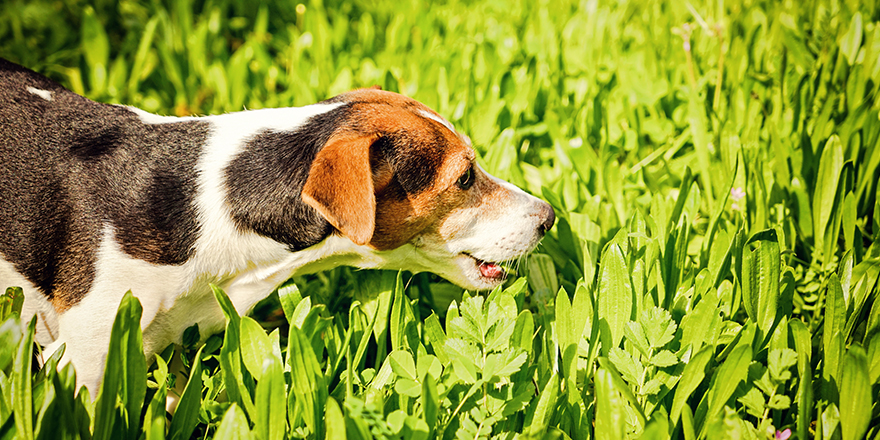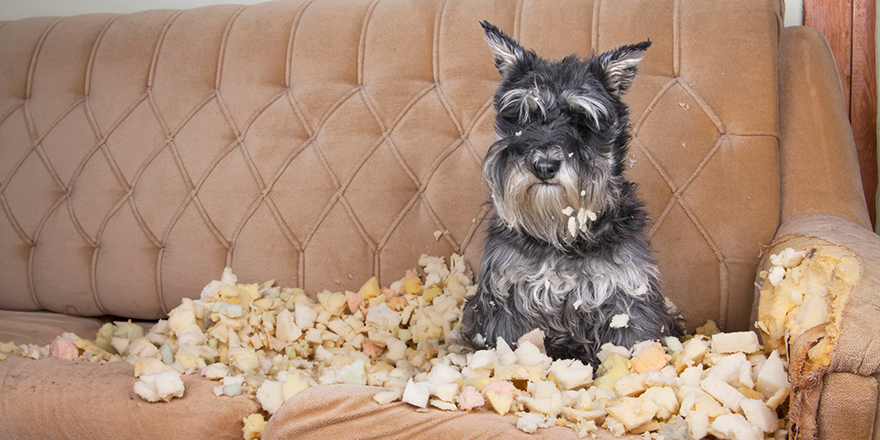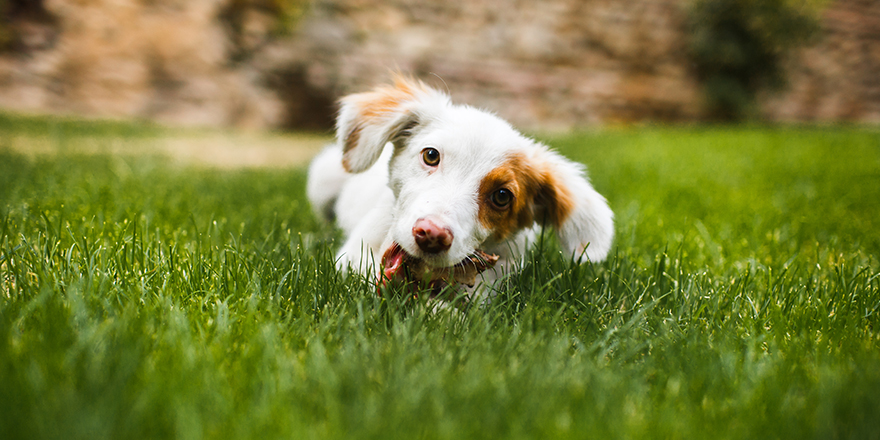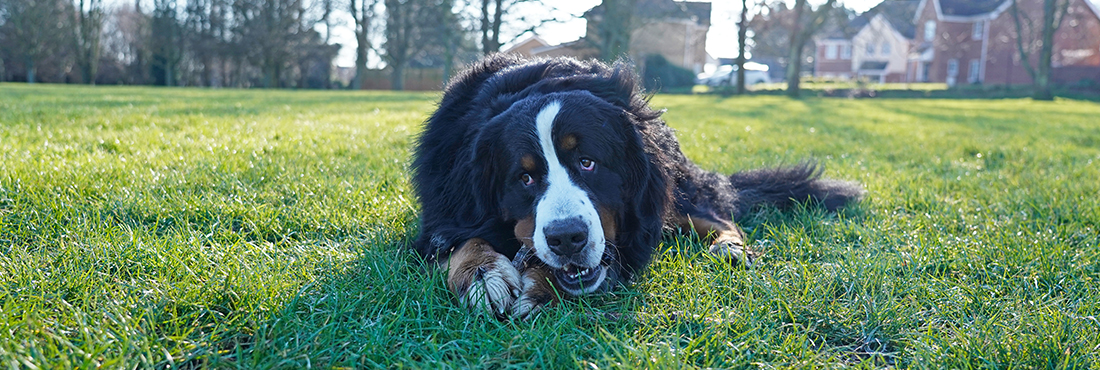Adolescent and adult dogs can both suffer from a condition that causes them to crave and eat non-food items. If you see your dog eating dirt, licking rocks, or chewing on anything other than their own kibble, it’s highly probable that they have Pica disorder. The severity and causes of dogs’ Pica can vary, depending on any other possible underlying medical conditions. In this guide, we talk about what Pica is, what causes it, and how it’s treated. The information below will help you aid your dog if you find them munching on foreign objects.
What is Pica in Dogs?

Dog’s Pica is a medical condition where a canine seems to enjoy eating non-food objects. This leads to them ingesting non-food items, which can then cause issues with the dog’s health, including injury to their digestive tract.
Pica in dogs is not always so severe as to cause other medical problems. Some dogs will just lick or chew rocks, which can also be a sign of nutritional deficiency. Pica may or may not be caused by other issues with your pet’s health that you’re unaware of. Behavioral Pica exists, too, and can be the result of compulsive eating or your dog’s anxiety levels reaching too-high states.
What Causes Pica?
In most cases, Pica will appear because of a lack of nutrition in a dog’s diet. Most dogs will turn to eat objects to try and gain the nutrition they aren’t getting from their food. Proper diet and changes to their current dog food can help combat this cause of Pica very quickly.
Pica may also be caused by your dog’s anxiety or other negative emotions. Behavioral Pica can have an underlying cause that requires your dog to be treated for stress and anxiety and may have appeared due to past trauma. If your vet suspects this is the case, you can work out a treatment plan that will help your dog feel more comfortable, confident, and safer in their current environment.
The third major cause of Pica is an unknown underlying medical issue. We’ll get into this more later on in this guide, but essentially, Pica can be a symptom of other health conditions that your dog may have. Identifying Pica is a great first step to getting your dog the treatment that they need.
Some dog breeds are more prone to developing Pica than others, too.
Understanding the Pica Disorder in Dogs
There are so many reasons that your dog may have developed Pica that it’s difficult to list them all. Any notable behavior modification may be linked to your dog’s Pica disorder, as well as past trauma leading them to develop the condition.
Pica should not be confused with Coprophagia, a similar condition. Coprophagia is the act of eating feces, which is more common in puppies than in adult dogs. But, because the behavior is hard to kick once it has become a habit, a puppy with the condition has a high chance of bringing it into adulthood with them.
Diagnosing Pica in Dogs
The quickest way to diagnose Pica is to answer this question: Is your dog licking, chewing, or swallowing non-food items? If the answer is yes, it’s very likely that your dog has Pica. Pica is defined as the act of a dog eating non-food objects. If the answer is no, then it’s not Pica.
Your vet will be able to run some tests and ask some questions to determine what may be causing Pica in your pup.
Signs that Your Dog Might Have Pica
- Going out into your yard to chew rocks.
- Eating dirt.
- Ripped up pillows.
- Aggressive chewing of their toys.
- Toys with missing chunks that you can’t find.
- Chewed up socks, shoes, and clothes.
- Stress and/or anxiety.
- Separation anxiety.
- Being destructive.
- Eating too much or too little of their dog food.
Pica Caused by An Underlying Medical Condition
The following medical conditions and mental health conditions in dogs can have Pica as a symptom:
- Anemia
- Diabetes
- Inflammatory Bowel Disease
- Liver disease
- Neurological issues
- Pancreatic disease
- Parasites
- Separation Anxiety
- Stomach Tumors
- Stress (Behavioral Pica is often called stress eating.)
- Thyroid disease and other thyroid problems
How to Treat Pica in Dogs

Treatment will likely start with a complete physical exam and blood, stool, and urine tests. With these tests and the information you supply, your vet will be able to rule out other conditions and test for common conditions that have Pica as a symptom.
Your vet will ask you what your dog eats on a regular basis, including any treats and human food you give them. It’s crucial that you tell the complete truth here so that your vet can build a nutritional profile of your dog’s diet. Because a nutritional deficiency is one of the main causes of Pica, knowing what your dog eats may save them from unnecessary tests.
Pet parents should also tell their vet about any behavioral changes that they’ve witnessed in their dog. Anxious dogs may be suffering from behavioral Pica, rather than Pica caused by lack of nutrition or other medical reasons.
After your vet has diagnosed the type of Pica your dog has and any other medical conditions that were hiding that could be causing the condition, they will go on to create a treatment plan. Treatment plans for pica may include behavioral reconditioning, medication, appointments with a veterinary behaviorist, and an at-home care plan.
Pet care for dogs with Pica
Because Pica can be caused by nutritional imbalances, often the first step is to look at your dog’s diet.
A major concern that pet owners should have is the possibility of their dog developing an intestinal blockage after eating non-food objects. A non-food item that isn’t good for your dog to digest could get stuck anywhere along their digestive tract, or it may cause gastrointestinal distress once it hits the stomach. This can lead to diarrhea, vomiting, and more.
Therefore, it’s important to keep your canine away from any non-food items that you’ve seen them eat or lick before. The last thing your pup needs is to end up at an emergency vet. A blockage may pass by itself, but it usually needs to be checked out and may require an ultrasound, an X-ray, or possibly surgery.
Eating rocks is one of the most common versions of Pica. If you’re letting your dog outside, where they can find rocks, be sure to supervise them. Watch them like a hawk and halt any inappropriate eating in its tracts.
A feeding schedule is often a great idea for any dogs that have Pica. Feeding your dog little and often is better than two big meals a day because it will help them resist the need to go and eat non-food objects to get their nutrition. You can combine your pup’s feeding schedule with nutritional supplements for better results.
As well as changes in their diet, it’s important to give your dog enough mental stimulation each day. That means spending more time with them, taking them on walks, playing with them, or just sitting quietly and watching a movie together. The more one-on-one time you have, the more your dog will calm down.
Dealing with compulsive behavior caused by dog Pica
A dog behaviorist may be able to help with some of the compulsive behavior that is caused by Pica. Do your research and find a professional offering behavioral training that has experience with dogs that suffer from Pica.
Without expert help and advice, you may find behavior modification very difficult. Reconditioning your dog’s behavior is no small feat to manage. Pica can make dogs more destructive and they are often very stressed and anxious. For your dog to recover from their Pica disorder, they need every bit of help they can get.
While your dog is learning how to enjoy life without compulsions again, be sure to take time to train them at home. Go through commands they know, teach them new ones, and reward them often. Stay positive.
We advise that you start by teaching your dog the “leave it”/”drop it” command if they don’t know it already. A sharp command is going to stop your dog from eating things they shouldn’t faster than you can get to them to stop them from doing it.
Non-Food Objects Your Dog Might Try to Eat
- Dirt
- Rocks
- Pillow/couch stuffing
- Rubber
- Plastic
- Sand
- Their chew toys
Pica in Puppies
Though Coprophagia is more common in puppies, young dogs can still suffer from Pica. While they’re little, you’ll need to watch out for both conditions and seek veterinary help as soon as you notice your little pup eating anything they shouldn’t be eating.
The quicker you can curb the behavior caused by Pica and Coprophagia, the better. Puppies who aren’t helped with these conditions will keep doing it as they get older, but it’s especially dangerous for them to be eating foreign objects while they’re so little.
Pica in Animals That Aren’t Dogs
Dogs aren’t the only animals that can get the Pica disorder. It’s more associated with dogs because it’s more common for dogs to get Pica, but they are far from the only pet that suffers from the condition.
Other animals that are known to get Pica are:
- Cats
- Birds
- Horses
- Rats
- Mice
- Rabbits
Interestingly enough, Pica is also observed in people who are pregnant.
What are the Dangers of Pica in Adult Dogs?

You’ve read about the symptoms, the causes, and the treatment, so let’s look at why Pica is such a dangerous and unhealthy condition for dogs and other animals to have.
It’s not just that your dog is chewing on non-food items, it’s that they could be swallowing those objects. For example, once they swallow a rock, that rock will make its way down through your dog’s digestive system, into their stomach, and then needs to be digested. Your dog’s body is not made to digest rocks. If the rock even makes it into their intestinal tract, they’re going to have a hard time passing it.
It’s more likely that your dog will end up injuring themselves passing the rock (if it’s small enough), or they’ll need surgery because it will create a blockage somewhere. If you see blood in your dog’s stool, their bathroom habits change, they are vomiting, or they seem lethargic, get them checked out.
Another danger of Pica is your dog chewing on or eating something toxic. This is a ticket to an emergency vet, and you’ll need to look out for symptoms of gastrointestinal distress, weakness, and lethargy.
Note: The contents of the www.mypetneedsthat.com website, such as text, graphics, images, and other material contained on this site (“Content”) are for informational purposes only. The Content is not intended to be a substitute for professional veterinarian advice, diagnosis, or treatment. Always seek the advice of your veterinarian with any questions you may have regarding the medical condition of your pet. Never disregard professional advice or delay in seeking it because of something you have read on this website.
Source:
- What Causes Pica in Dogs? – PetMD
Frequently Asked Questions
Dogs are one of the more common animals to suffer from the disorder known as "Pica". Pica in dogs is diagnosed when the dog has been eating non-food objects, such as rocks and dirt. These aren't the only non-food items that dogs with Pica will eat, but they are two well-documented examples.
There could be several reasons that your dog is eating objects that aren't considered food. The type of object your pup is trying to eat can give you some indication of why they might be eating it. Rocks are common because dogs get an earthy iron taste from them, which points towards nutritional imbalances and deficiencies over stress-related Pica. Pica can also be the result of other underlying conditions, which we've listed in this guide.
Dogs can grow out of Pica, and many puppies with the condition do as they get older. Sometimes the obsession with non-food objects is just a phase that your pup is going through and needs to get out of their system. The worry should come when your dog doesn't seem to be getting any better as they age and is continuing to eat objects that aren't food.
Note: The advice provided in this post is intended for informational purposes and does not constitute medical advice regarding pets. For an accurate diagnosis of your pet's condition, please make an appointment with your vet.

